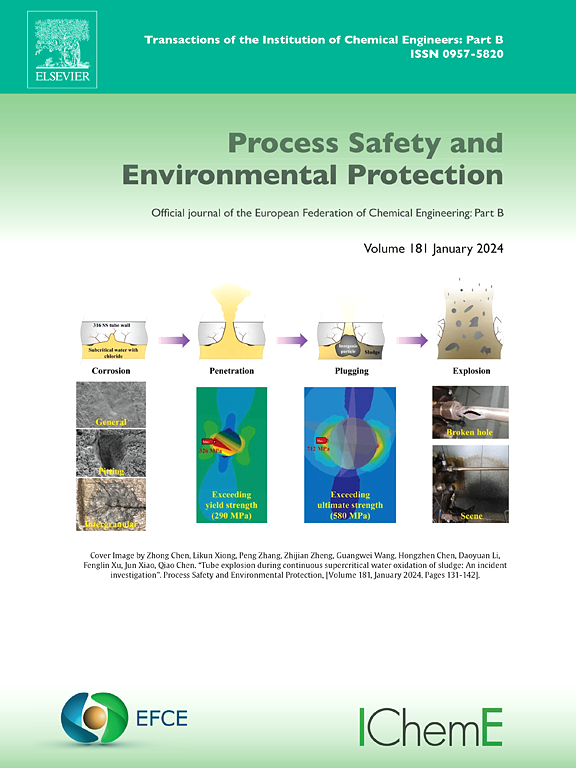Calcinated sea urchin shell waste for rapid phosphate removal from greywater for application to nature-based systems
IF 6.9
2区 环境科学与生态学
Q1 ENGINEERING, CHEMICAL
引用次数: 0
Abstract
Nature-based decentralised solutions (NBDS) have been trialled for greywater treatment, but their adoption for this is limited due to their inefficient phosphorus removal. To enhance NBDS like green walls, and closely align their engineered designs with Sustainable Development Goals, repurposing waste materials within them is important. This study evaluated the effectiveness of using sea urchin waste shells to remove phosphate from greywater. Modifying the raw waste shells into calcinated shells at 800 °C substantially increased their phosphate adsorption capacity (qe) from 0.69 to 13 mg P/g and phosphate removal equilibrium was achieved within three minutes. The maximum phosphate adsorption capacity was 41.98 mg P/g with a removal efficiency of 98 %. Material characterisation of the shells from XRD, FTIR, SEM, and EDS analyses revealed that phosphate removal primarily occurred through co-precipitation with Ca2 +. The effects of shell adsorbent dosage, initial solution pH, calcination temperature, and presence of co-existing pollutants on phosphate adsorption capacity, were investigated. A Langmuir adsorption isotherm and pseudo-first-order kinetic best described phosphorus removal behaviour. Chemical equilibrium modelling using Visual MINTEQ confirmed the phosphate precipitation process. These results demonstrate waste sea urchin shells' potential for rapid, effective phosphate removal in NBDS for greywater treatment.
求助全文
约1分钟内获得全文
求助全文
来源期刊

Process Safety and Environmental Protection
环境科学-工程:化工
CiteScore
11.40
自引率
15.40%
发文量
929
审稿时长
8.0 months
期刊介绍:
The Process Safety and Environmental Protection (PSEP) journal is a leading international publication that focuses on the publication of high-quality, original research papers in the field of engineering, specifically those related to the safety of industrial processes and environmental protection. The journal encourages submissions that present new developments in safety and environmental aspects, particularly those that show how research findings can be applied in process engineering design and practice.
PSEP is particularly interested in research that brings fresh perspectives to established engineering principles, identifies unsolved problems, or suggests directions for future research. The journal also values contributions that push the boundaries of traditional engineering and welcomes multidisciplinary papers.
PSEP's articles are abstracted and indexed by a range of databases and services, which helps to ensure that the journal's research is accessible and recognized in the academic and professional communities. These databases include ANTE, Chemical Abstracts, Chemical Hazards in Industry, Current Contents, Elsevier Engineering Information database, Pascal Francis, Web of Science, Scopus, Engineering Information Database EnCompass LIT (Elsevier), and INSPEC. This wide coverage facilitates the dissemination of the journal's content to a global audience interested in process safety and environmental engineering.
 求助内容:
求助内容: 应助结果提醒方式:
应助结果提醒方式:


